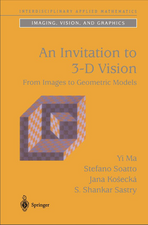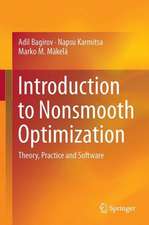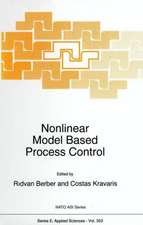How to Solve It: Modern Heuristics
Autor Zbigniew Michalewicz, David B. Fogelen Limba Engleză Paperback – 6 dec 2010
| Toate formatele și edițiile | Preț | Express |
|---|---|---|
| Paperback (1) | 403.81 lei 6-8 săpt. | |
| Springer Berlin, Heidelberg – 6 dec 2010 | 403.81 lei 6-8 săpt. | |
| Hardback (1) | 608.82 lei 6-8 săpt. | |
| Springer Berlin, Heidelberg – 21 sep 2004 | 608.82 lei 6-8 săpt. |
Preț: 403.81 lei
Preț vechi: 504.76 lei
-20% Nou
Puncte Express: 606
Preț estimativ în valută:
77.27€ • 80.84$ • 64.19£
77.27€ • 80.84$ • 64.19£
Carte tipărită la comandă
Livrare economică 03-17 aprilie
Preluare comenzi: 021 569.72.76
Specificații
ISBN-13: 9783642061349
ISBN-10: 3642061346
Pagini: 576
Ilustrații: XVI, 554 p.
Dimensiuni: 155 x 235 x 30 mm
Greutate: 0.82 kg
Ediția:2nd ed. 2004
Editura: Springer Berlin, Heidelberg
Colecția Springer
Locul publicării:Berlin, Heidelberg, Germany
ISBN-10: 3642061346
Pagini: 576
Ilustrații: XVI, 554 p.
Dimensiuni: 155 x 235 x 30 mm
Greutate: 0.82 kg
Ediția:2nd ed. 2004
Editura: Springer Berlin, Heidelberg
Colecția Springer
Locul publicării:Berlin, Heidelberg, Germany
Public țintă
Professional/practitionerCuprins
I What Are the Ages of My Three Sons?.- 1 Why Are Some Problems Difficult to Solve?.- II How Important Is a Model?.- 2 Basic Concepts.- III What Are the Prices in 7–11?.- 3 Traditional Methods — Part 1.- IV What Are the Numbers?.- 4 Traditional Methods — Part 2.- V What’s the Color of the Bear?.- 5 Escaping Local Optima.- VI How Good Is Your Intuition?.- 6 An Evolutionary Approach.- VII One of These Things Is Not Like the Others.- 7 Designing Evolutionary Algorithms.- VIII What Is the Shortest Way?.- 8 The Traveling Salesman Problem.- IX Who Owns the Zebra?.- 9 Constraint-Handling Techniques.- X Can You Tune to the Problem?.- 10 Tuning the Algorithm to the Problem.- XI Can You Mate in Two Moves?.- 11 Time-Varying Environments and Noise.- XII Day of the Week of January 1st.- 12 Neural Networks.- XIII What Was the Length of the Rope?.- 13 Fuzzy Systems.- XIV Everything Depends on Something Else.- 14 Coevolutionary Systems.- XV Who’s Taller?.- 15 Multicriteria Decision-Making.- XVI Do You Like Simple Solutions?.- 16 Hybrid Systems.- 17 Summary.- Appendix A: Probability and Statistics.- A.1 Basic concepts of probability.- A.2 Random variables.- A.2.1 Discrete random variables.- A.2.2 Continuous random variables.- A.3 Descriptive statistics of random variables.- A.4 Limit theorems and inequalities.- A.5 Adding random variables.- A.6 Generating random numbers on a computer.- A.7 Estimation.- A.8 Statistical hypothesis testing.- A.9 Linear regression.- A.10 Summary.- Appendix B: Problems and Projects.- B.1 Trying some practical problems.- B.2 Reporting computational experiments with heuristic methods.- References.


























